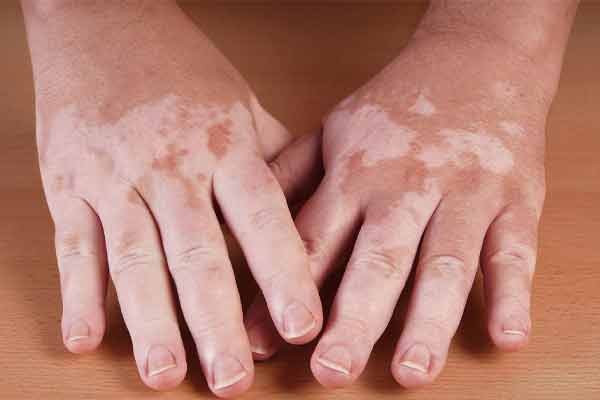Vitiligo

Causes:
The exact cause of vitiligo is still unknown, but several theories have been proposed:
Autoimmune Theory: Many researchers believe that vitiligo is an autoimmune disorder, in which the body’s immune system mistakenly attacks and destroys its own melanocytes.
Genetic Factors: There is evidence to suggest that certain genetic factors may increase the likelihood of developing vitiligo. Family history of the condition can be a risk factor.
Neural Theory: This theory suggests that neurochemicals released by nerve endings in the skin may be toxic to melanocytes, leading to their destruction.
Oxidative Stress: Imbalances in oxidative stress within the skin cells may contribute to the development of vitiligo.
Symptoms:
The primary symptom of vitiligo is the appearance of white or depigmented patches on the skin. These patches are more noticeable in individuals with darker skin tones. The patches can occur anywhere on the body, including the face, hands, feet, arms, legs, and genital area. Other common symptoms may include:
Premature Graying: The loss of pigment in the hair can lead to the development of white or gray hair in areas affected by vitiligo.
Sensitivity to Sunlight: The depigmented patches may be more sensitive to sunlight and prone to sunburns.
Loss of Color in Mucous Membranes: In some cases, vitiligo may affect the mucous membranes, leading to the loss of color in the tissues lining the inside of the mouth, nose, and eyes.
Treatment Options:
While there is no cure for vitiligo, various treatment options can help manage the condition and improve the appearance of the affected skin:
Topical Corticosteroids: These are commonly prescribed to reduce inflammation and repigment the white patches. They are most effective when used in the early stages of vitiligo.
Topical Calcineurin Inhibitors: These medications help to modulate the immune response and promote repigmentation.
Topical Psoralen Plus Ultraviolet A (PUVA) Therapy: This involves applying a psoralen medication to the skin, followed by exposure to ultraviolet A (UVA) light. It stimulates the repigmentation process by increasing melanocyte activity.
Excimer Laser: This targeted laser treatment delivers high-energy ultraviolet light to the depigmented areas, helping to stimulate melanocyte production.
Depigmentation: In extensive cases, depigmentation of the remaining pigmented areas may be considered to achieve a more uniform appearance.
